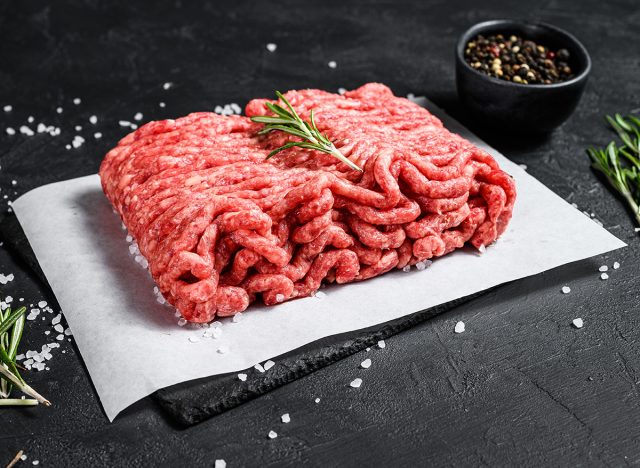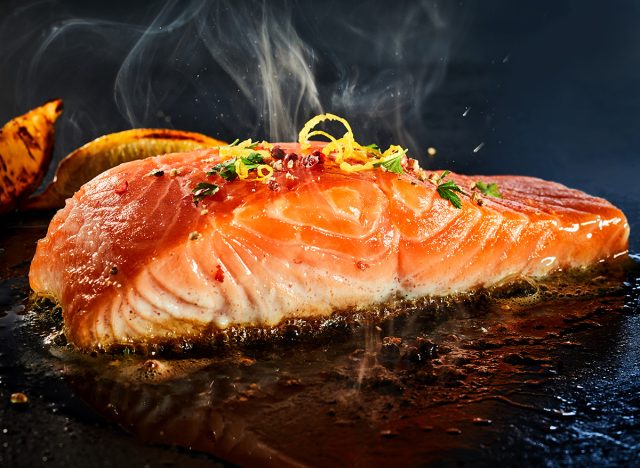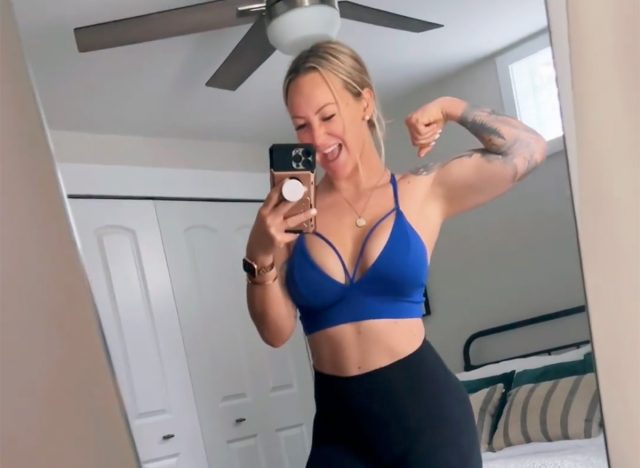Speed Up Your Fat Loss With These Simple Food Choices
Jillian Rebecca (@jillianrfit) is a social media influencer "Bridging the gap between hormones + fat loss." She regularly shares videos on how to hack your metabolism and lose weight in the process by making simple changes to your diet. In one viral video, she claims you can speed up your weight loss journey by doing one simple thing. "I'm going to tell you the one thing that can speed up your fat loss journey faster than pretty much anything else you could possibly do without taking ridiculous extreme measures," she says in the clip. "Literally this one thing that you can do is the difference between you losing fat and you losing weight," she adds, before going on to drop her "bomb" of knowledge.
When You "Lose Weight," You Are Likely Losing Muscle
@jillianrfit #fatloss #weightloss #sustainablediet #womensweightloss #balanceddiet #caloriedeficit #FomotionalFinds #metabolism #weightlosshack ♬ original sound – JILLIAN REBECCA
"When you lose weight, it means the scale goes down," she says, explaining that you're likely losing muscle and not fat. "But if you do this one thing, it will shift what you're losing from weight to fat, and that's what we're here for."
Losing Weight Will Leave You "Skinny Fat"

She explains that you need to put your focus on more than a "goal weight," as simply losing weight will leave you "skinny fat." She adds that "strength training is near and dear" to her heart and she is anti-cardio.
If You Want to Lose Fat, You Need to Eat Protein

"If you want a toned body and to lose fat instead of weight and to really ramp up your fat loss journey, the one thing that you need to do is eat the correct amount of protein for your body," she reveals.
Use the Lean Body Mass Calculator

"The majority of the population does not eat nearly enough protein to get through their day," she continues. "My general rule of thumb is going off of your lean body mass, so you can just Google 'lean body mass calculator' and whatever number it spits out to you of your lean body mass. After you enter your stats, let's say it's 120 pounds of lean body mass, you should have at least 120 grams of protein daily. If you can eat a little bit more than that, that's awesome. At a bare minimum, you should be eating at least 0.8 grams of protein per pound of body weight."
This Will Help You Maintain Your Muscle Mass

"Doing this will ensure that you maintain your muscle mass, especially if you're lifting and if you're not, at least maintain the muscle mass that you do have so that the weight that you're losing in your journey, your dieting journey is fat and not just anything. That's one of the biggest secrets to getting toned," she claims.
Amping Up Protein Will Lead to Weight Loss, Says Science

According to clinical trials, consuming more protein than the recommended dietary allowance not only reduces body weight (BW), but also enhances body composition by decreasing fat mass while preserving fat-free mass (FFM) in both low-calorie and standard-calorie diets.
An Expert Agrees

If you do want to lean out, upping your protein intake "will help with hunger and fullness," Chris McMahon, a nutrition and fitness coach, tells The Body Network. "It'll also help with preserving the muscle mass you have. And if you are lifting weights and you are training, it'll help you build muscle and recover. So we want to make sure that's higher."
Choose Lean Protein

McMahon also suggests gravitating toward leaner sources of protein "Fat just tends to be a more expensive macronutrient. In one gram of protein, there's four calories in one gram of fat, there's nine calories. So if you're someone who's used to eating fattier pieces of steak, if you're eating darker meat, then you're going to have higher fat content. So it just comes down to if I eat a leaner source of protein, if I switch to non-fat, Greek yogurt, if I switch to 1% cottage cheese, if I'm aware of those things, you're going to be able to increase the amount of it that you're eating without driving up your calories."
💪🔥Body Booster: If you want to build lean muscle, opt for lean protein choices. If you want to bulk up, you should gravitate toward fattier protein. And if you enjoyed this article, take advantage of these 15 Quick Ways to Lose Body Fat Percentage in a Week.





